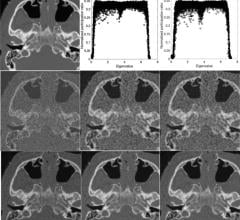February 12, 2015 — In patients who don't resume normal urination after surgery, a simple ultrasound test can accurately diagnose the common problem of postoperative urinary retention (POUR), reports a study in Anesthesia & Analgesia.
Using ultrasound to measure bladder diameter provides a quick and inexpensive test for POUR, according to the new research by Aurélien Daurat, M.D. and colleagues of Lapeyronie University Hospital, Montpelier, France. The researchers believe their simplified approach may obviate the need for costly automated devices for measuring bladder volume.
Daurat and coauthors evaluated their simplified approach to ultrasound bladder measurement in 100 patients who were considered at risk of POUR because they were unable to urinate after orthopedic surgery. Postoperative urinary retention is a common side effect after surgery and general anesthesia. If the bladder isn't emptied, POUR can prolong the patient's hospital stay and lead to potentially serious complications.
In the recovery room, all patients underwent a single ultrasound measurement of bladder diameter in the transverse dimension (from side to side). These measures were obtained by nurses using a pocket-sized portable ultrasound device.
All 100 patients then underwent measurement of bladder volume using a special automated device. About half of the patients underwent placement of a catheter to drain the bladder, which allowed measurement of the actual volume of urine. The results were compared to evaluate the ultrasound's ability test to diagnose POUR—defined as an automated measurement of 600 milliliters and/or the need for catheter placement.
The average bladder diameter was about 11 cm in patients with POUR, compared with 8 to 9 cm in those without POUR. The ultrasound-measured diameter was strongly correlated with the automated bladder volume measurement or the actual urine volume.
Ultrasound bladder measurement proved to be an accurate diagnostic test for POUR. If the bladder diameter was 9.7 cm or less, the patient could be safely discharged. If the diameter was larger than 10.7 cm, POUR might be present and catheter placement should be considered. The ultrasound test would be considered inconclusive only for patients in the "grey zone" between 9.7 and 10.7 cm.
Although POUR is a frequent and potentially serious problem, it can be challenging to recognize in the recovery room after surgery. The new study suggests that a single ultrasound bladder measurement provides a simplified yet accurate approach to making the diagnosis in patients who don't void after surgery.
The researchers note that the test can be efficiently performed by nurses using a widely available portable ultrasound device—an important advantage over approaches using more complex measurements or specialized equipment. "The findings of this study directly call into question the usefulness of expensive specific devices for assessing POUR in the postoperative period," Daurat and coauthors conclude.
For more information: www.journals.lww.com/anesthesia-analgesia/Pages/default.aspx


 December 23, 2025
December 23, 2025 









